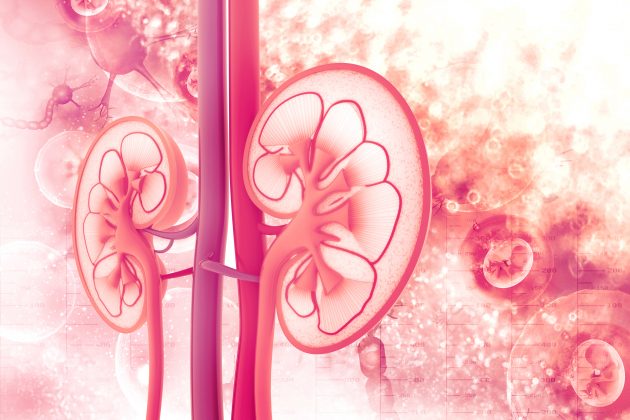
In-hospital admissions among individuals receiving kidney replacement therapy account for up to 33% of Medicare expenditures for that patient population and are a risk factor for high morbidity and mortality. Data from the US Renal Data System (USRDS) reveal risk factors for hospitalization are female sex, Black race, and young age. However, according to Ladan Golestaneh, MD, MS, and colleagues, there are substantial variations in hospitalization rates by health service area, and risks for hospitalizations are not consistent across varying types of communities, as defined by racial composition and rural/urban continuum, in the United States.
Results of previous observational studies have demonstrated disparities in predialysis care, quality of dialysis care, and access to transplantation in patients residing in Black communities. The risk of hospitalization has been shown to be higher in Black patients on hemodialysis, but it is not known whether the higher risk is related to the risks inherent in living in communities with a high percentage of Black residents.
Dr. Golestaneh et al. conducted a retrospective analysis of prospectively collected data from a cohort of patients receiving hemodialysis to test the hypothesis that patients receiving hemodialysis being treated at facilities in communities with more Black residents have a higher risk for hospitalization and that this association accounts, in part, for the higher risk for hospitalization attributed to Black patients by the USRDS. Results of the study were reported in the American Journal of Kidney Diseases [2020;76(6):754-764].
The study cohort included 4567 patients who were treated at 154 dialysis facilities in 127 unique zip codes and were enrolled in US DOPPS (Dialysis Outcomes and Practice Patterns Study) phases 4 to 5 (2010-2015). The outcome of interest was the rate of hospitalizations during the study period.
Mean follow-up time was 1.35 years. Of the 4567 study participants, 53% were White, 27% were Black, 10% were Hispanic, and 4% were Asian. Thirteen percent were ≤45 years of age and 45% were women. The zip codes were stratified into tertiles based on the percentage of Black residents in sampled zip codes of dialysis facilities: median percentage for tertiles 1, 2, and 3 were 1.0% (range, 0%-1.8%), 5.5% (range, >1.8% -14.4%), and 34.2% (range, >14.4%-92.6%), respectively.
Most facilities in tertile 3 were in poor urban areas, with a higher percentage of households headed by women and lower percentages of households with a higher education and with an active internet subscription compared with tertiles 1 and 2. Facilities in tertile 3 were also more frequently for-profit and had a higher patient census.
Compared with patients treated at facilities in tertile 1, those treated in facilities in tertile 3 were younger, more commonly Black, had lower educational level attainment, more commonly lived in poverty, and more frequently had an arteriovenous graft or catheter rather than an arteriovenous fistula. Mean Charlson scores were also lower in tertile 3 compared with tertile 1.
Fewer patients at tertile 3 centers had a diagnosis of psychiatric disorder, coronary or other cardiac/cerebrovascular diseases, diabetes, or lung disease; a higher proportion had hypertension, heart failure, and HIV, and reported substance abuse. There were also clinically relevant differences in the cause of kidney failure: Black patients receiving dialysis in zip codes with the lowest tertile of Black residents had a diagnosis of glomerulonephritis more commonly as the cause of kidney failure and a diagnosis of hypertension less commonly than Black patients treated at facilities in tertiles with the highest proportion of Black residents (12.3% vs 8.8% for glomerulonephritis; 33.3% vs 44.0% for hypertension; P=.07).
The overall hospitalization incidence rate among all patients was 1.19 per person-year. Crude hospitalization rates per person-year for tertile 1, tertile 2, and tertile 3 were 1.05, 1.20, and 1.37, respectively. Compared with the lowest tertile, the unadjusted model incidence rate ratio (IRR) for hospitalizations was 1.11 (95% confidence interval [CI], 0.96-1.30) in tertile 2 and 1.28 (95% CI, 1.08-1.51) in tertile 3.
Following adjustment for categories of variables, the association remained robust. For tertile 3, the IRR was 1.32 (95% CI, 1.12-1.56) in fully adjusted models compared with tertile 1.
The researchers also examined effect modification of the association between community racial composition tertile and hospitalization with a priori-specified patient (including sex, race, and comorbid conditions) and facility characteristic (profit status and patient census). There was no significant 2-way interaction between community racial composition tertile and age (P=.5), sex (P=.1), diabetes status (P=.1), race/ethnicity (P=.2), Charlson comorbidity score (P=.1), facility profit status (P=.9), or facility patient census (P=.3). The variables did not modify the effect of community racial composition tertile on hospitalizations IRR.
In community racial composition tertiles 1, 2, and 3, crude mortality rates were 0.19, 0.15, and 0.14 deaths per patient-year, respectively. In Cox analysis, following adjustment for age and facility clustering, the hazard ratio (HR) for mortality was 0.92 (95% CI, 0.77-1.11) for tertile 3 compared with tertile 1 and 0.85 (95% CI, 0.71-1.01) for tertile 2 compared with tertile 1. Results of fully adjusted Cox models had similar HRs for mortality within tertiles.
The researchers cited some limitations to the study findings, including the possibility of residual confounding due to unmeasured patient- or community-level variables. In addition, the use of community racial composition may have overlooked socioeconomic factors and their role in outcomes.
In conclusion, the researchers said, “This study found that patients treated in dialysis facilities located in communities with a high percentage of Black residents are at higher risk for hospitalization than patients treated in communities with a lower percentage of Black residents, despite similar quality of dialysis care and adherence and after adjustment for individual comorbid conditions and individual- and community-level sociodemographic factors, including individual-level race/ethnicity. To eliminate healthcare disparities while at the same time reducing cost, the medical community should focus on addressing drivers of higher hospital/emergency department use in communities with a higher percentage of Black residents.”
Takeaway Points
- Researchers conducted a retrospective analysis of prospectively collected data to examine whether living in communities with predominantly Black residents is associated with risk for hospitalization among patients receiving hemodialysis.
- The study stratified patients based on tertiles of percentage of Black residents within the zip codes of patients’ dialysis facility.
- Residents in facilities in tertile 3 (higher proportion of Black patients) had higher adjusted rate of hospitalization (hazard ratio, 1.32; 95% confidence interval, 1.12-1.56) compared with those treated in communities in tertile 1.
Credit: Original article published here.









